A Different Side to the War: Interview with Shannon Bates
Shannon Keogh did this interview with a young soldier home on leave from Iraq who does photography in the desert--not combat photography, but photos of the daily scene at her base camp and elsewhere. She has a website on mnartists.org
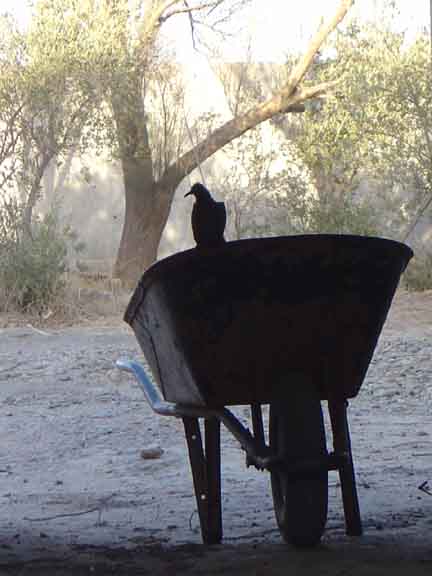
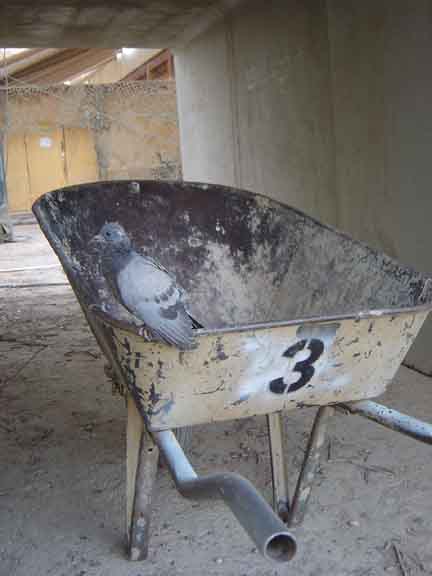
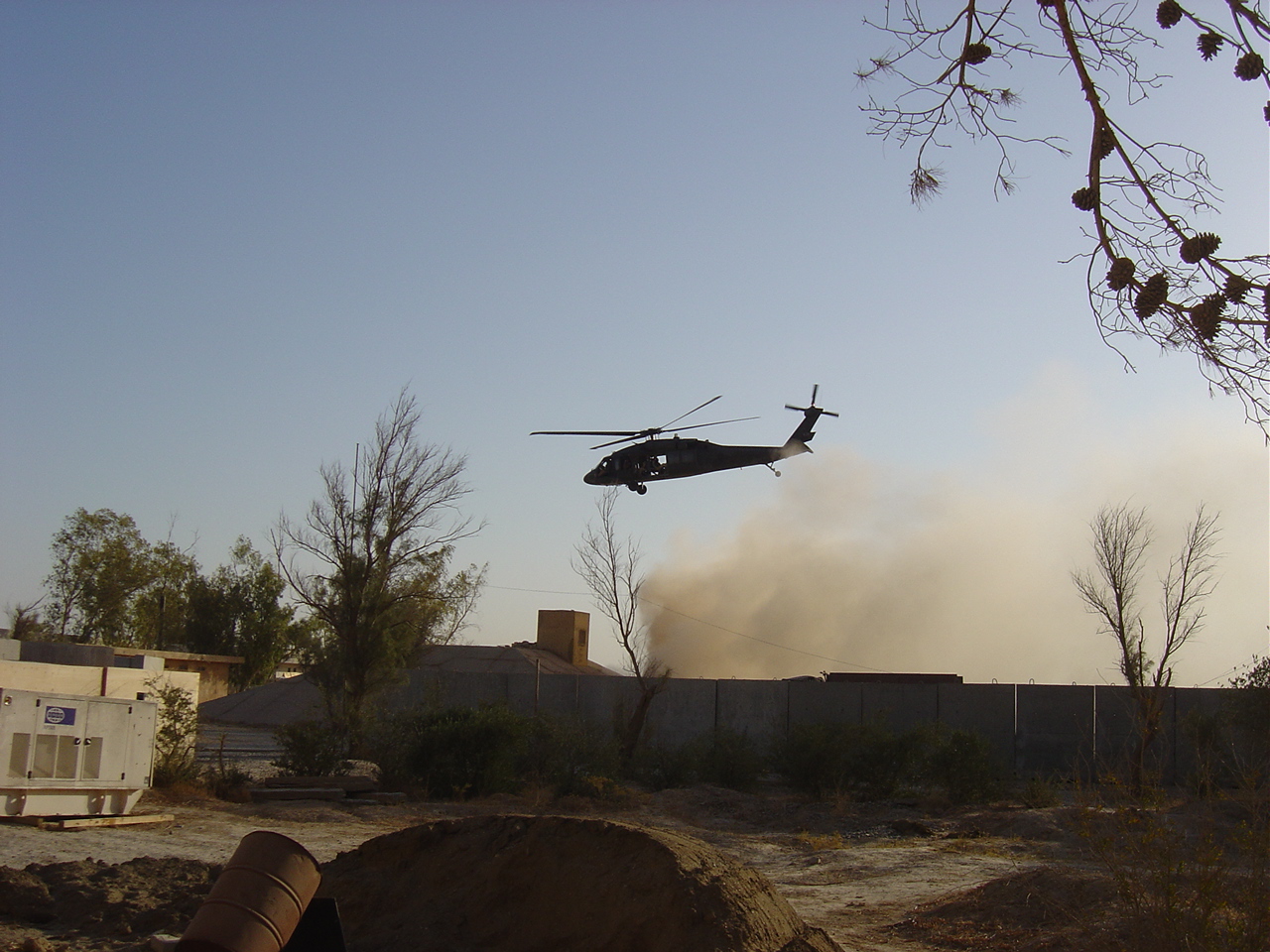
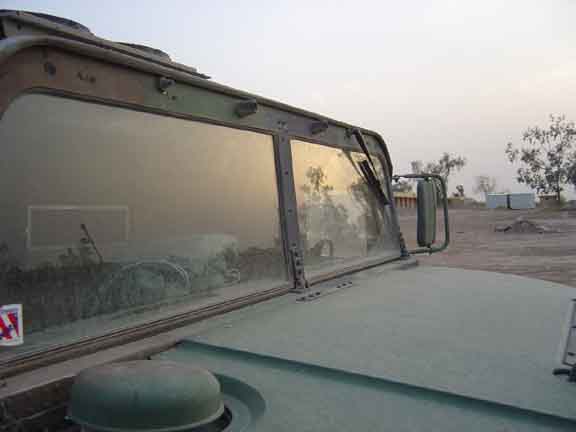
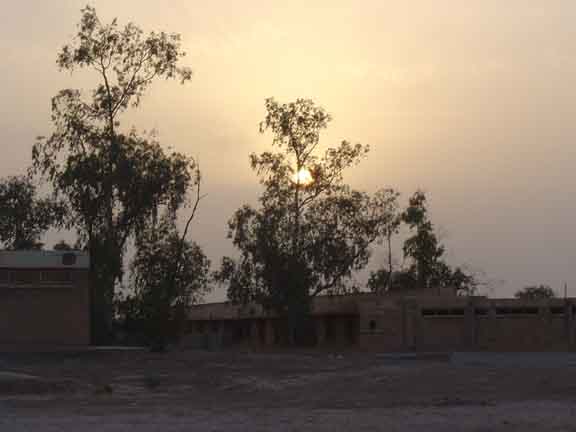

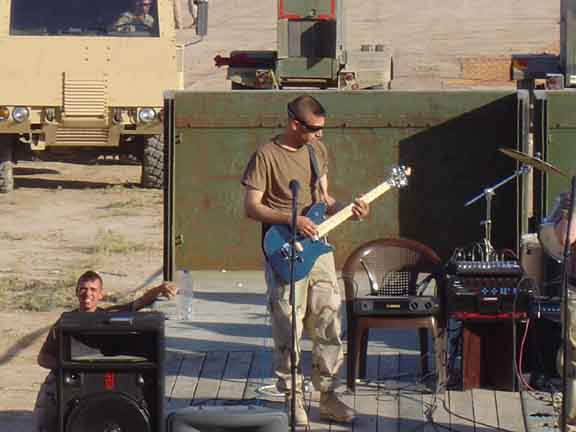
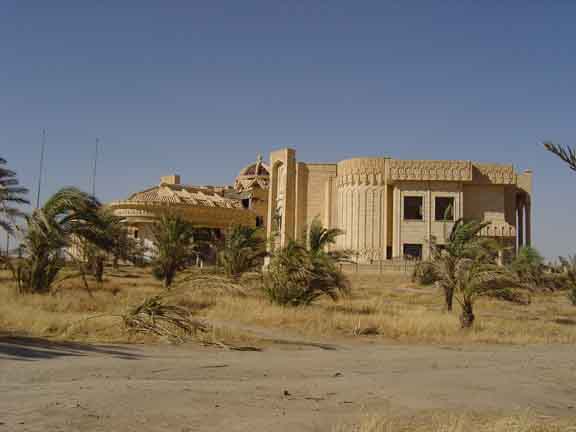
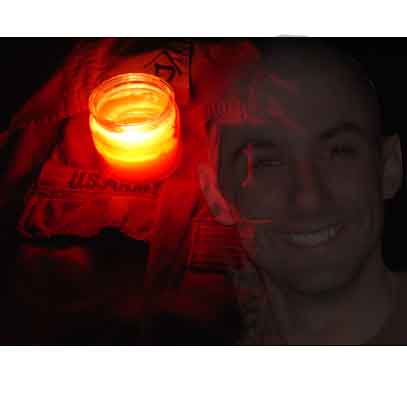
I sat down with Shannon Bates, a 21-year-old soldier (and photographer) based in Iraq, while she was back in town on leave. While staving off boredom in the army base shack where she works as a switch operator, Shannon has gotten involved with mnartists.org. She has received some positive attention from the photographs she’s posted on her mnartists web page, including an admiring request for a print. She has also started a photo exchange with another Minnesota photographer; they give each other themes to focus on in their respective environments. What follows is an excerpt from a conversation I had with Shannon, about a week before she returned to her base, 30 miles north of Tikrit.
Did you grow up in Minnesota?
In Andover, and near Coon Lake. Only two places I’ve ever really lived.
I guess going into the military changed all that.
Yeah, got me to South Carolina, then Georgia, then Germany…I did traveling before I was in the army, I went to Canada and Mexico. I wish I could dig up those pictures from Mexico – I took some cool ones of the ruins.
How did you decide to enter the military?
I didn’t have any money for college, and my parents were having a fit trying to figure out how they were going to do it. I just decided it wasn’t their problem, it was mine. Decided to do it on my own.
What do you do in the army? What’s your job?
I’m a phone switch operator; I work in a small extension. We don’t get as much credit as the node centers do, they’re the hub, and they get all the credit for being important.
How did you get interested in photography?
It’s just something that I’ve always really liked. I got this camera while I was in Germany. I mean, I travel everywhere, and I’d never brought a camera anywhere, so half of the really awesome places I’ve been to I don’t even have picture of. I would buy postcards and stuff and think, well, I can do better than that!
When we were in Kuwait, I was showing my section sergeant some of my pictures, and he was like, ‘You’re really good, you’re really talented,’ and he tried to throw me the little hitch to reenlist, like – “You should do this for the army.” And then somebody from our orderly room – they have to take pictures of the commander doing ceremonies and stuff – he was like, “You should follow the commander around, you’re much better than I am.” It took a little encouragement from them, and I got to thinking, “Hey, they say I’ve got a natural eye, maybe I do have something here!”
Do you have any formal training? Have you taken photography classes?
I haven’t taken any photography classes. I was in a photography class in high school. At my school, there was one photography teacher who was really good, who was all about the creative process, and there was another one who was all about the technical processing, and was very strict and kind of took the fun out of it. I ended up getting in his class, and it was boring and painful to sit through the first day, so I went back to my counselor and dropped it. I mean, art, it can’t be stifled like that – you gotta have more freedom to it than, (adopting a strict voice) “This one has a smudge on it!” Yeah, well, maybe I like the smudge, leave it alone. It’s blurry – well, that gives it a different effect.
Why did you decide to start taking pictures in Iraq?
It was actually my section sergeant who got me really into it. He was like, “Maybe you can sell them to newspapers, or put together a photo journal of your trip to Iraq, maybe make a book out of it.” He was giving me all these great ideas about it, getting me really pumped up. I was like, yeah, let’s do this!
Sometimes you need the encouragement of someone else to get going on a project.
That’s what it was! Somebody to tell you, you know, you’re good – what are you sitting on this for?
Do you have a process for taking your photos? Do you go out looking for great images?
Sometimes I just take snapshots of the guys, just laying around and stuff. But like, with the pigeon one (see Shannon’s web page), it was right in front of my little shack that we work in. I was sitting outside, havin’ a smoke, and that pigeon was sitting on the wheelbarrow, and he was silhouetted just perfectly. He was inside of this concrete shelter thing – it’s for when we get incoming, you know, you’re supposed to go hide in them, but nobody really does – it had him shadowed so perfect, and the light behind him…I just sat there and watched him. I was like, you are too cool! He was sick and dying, I’m pretty sure later he just crawled somewhere peaceful and died. He looks really rough in that picture. And he was just so docile, and didn’t give a care that I was even there. I kept inching closer and closer, because I didn’t want to scare him and have him fly away, but I walked around to the other side of him and took a couple pictures that way, and it had a whole different effect, because the lighting was different and he looks so different from each side, depending on where the shadows are. I took about twelve of him.
How do you decide what to shoot or not shoot?
Like I was saying, I was just watching him [the bird] and he just struck me as so beautiful, so interesting, and I just couldn’t pass him up. There’s a shot that I still haven’t got that’s so cool – it’s right by our node center, which is where all the bigwigs are. There are three or four tents that are there, that have probably been there since we first got in country. And the wind and the weather and everything have gotten to them, and there’s nobody in them, so they’re just falling down and tearing and when the wind goes through them, it looks so cool! I want to get there, maybe at nighttime, because they’re white. I want to get there as the sun’s going down, see if maybe I can get reflections off the sun on them…even in the middle of the day they look so cool – raggedy and worn.
Where in Iraq are you stationed?
I’m on the Tikrit North Airfield. It’s an FOB – a fort operating base. It’s about thirty minutes north of Tikrit where we have Camp Danger, that’s the palace complex. I’ve got pictures of that, too. I got a cool one of Sadaam’s bombed-out palace.
Can you describe a typical day for you in Iraq?
Well, I get up, and depending if I want to go run or not…normally it’s not up to you, you gotta get up and do PT, which is, like, physical training. Get ready for work, eat breakfast, bring it all back for the guys. Then I’m on day shift, and the first thing I do is read all my emails, make sure the family knows I’m still alive, still kicking. The rest of the day you just kind of sit around until something breaks, perform maintenance on the trucks, or on the switch, go find this or that supply, and that’s kind of like a goose chase sometimes. I have fun doing it, it gives me time to socialize, get out of the shack before you drive yourself crazy. And the boring days, when there’s nothing going on, and there’s a wind storm outside and you don’t even want to go outside and smoke, and it’s ugly…
I have fun when it rains. It’s so amazing. We hadn’t seen rain since we got there. It’s just starting to rain again. I’ll turn on the mnartists.org, and I’ll look through all the different artists, I’ll read all the forums. I started posting more in there, it keeps me busy. End of the day, you’ve gotta chill the generator, make sure everything’s cleaned up for shift change, then go home and chill out, go to bed at nine or 10 o’clock, fall asleep to a movie. It’s pretty cush, I can’t lean on that’s it’s too rough. We’re luckier than most – most people live in bay styles – you know, bed after bed after bed – not very much privacy. This is the biggest room I’ve ever lived in, we’ve got a six person house, we’ve got a double wide trailer type thing, it’s all wood, it’s not even a trailer. Everybody has their own room.
What do you get personally from taking your photos?
Oh, I just like hearing people’s reactions out of them. It’s satisfying. Some people – like my team chief, he’s a little bit of an art connoisseur – he’s into, like, Salvador Dali, stuff like that – he’s just like, [adopting a “dude” voice] “I’m into art, but I don’t see why you’re taking a picture of a pigeon. . .”
What do you hope that your project will show or convey to other people?
I like to show a different side to the war. ‘Cause all you really see is – bombs here, soldiers running around invading places there – and I mean, there’s a whole different aspect to it. It’s not just what the news shows. All they show is three soldiers died here, five died in a car bombing, Iraqi police station attacked, ten soldiers wounded – it’s a lot different than that. It’s not as rough as it sounds, ‘cause all the news in interested in is body counts.
There’s a lot more there. We had pet kittens for a little while. I just loved taking pictures of them. One of the guys got a picture of one climbing in his Kevlar helmet. We had to get rid of them because the commanders think that carry disease. I had a vet look at them who said they’re the cleanest strays he’s ever seen. I just think they needed a little love.
Do you have any specific goals in mind when you’re taking your pictures?
I just like to get things from a different perspective that other people don’t see. Like with that sunset (see Shannon’s web page) – anybody can take a picture of a sunset, but to get it lined up perfectly, with that tree silhouetted… I just try every different angle I can think of, ‘cause it creates such a different perspective. The lighting just changes so much from one angle to another.
I don’t like altering my pictures at all. I just like them being how they are. I know you can touch anything up, but I think it’s so much better to see the original. Like with the gladiator one that I have, I was trying to be patient and wait until all the tourists were out of the way, but that was never gonna happen at the Coliseum in Rome. After looking at it so long, I realized that I kind of liked it – because it looked so old with the carriage and the Coliseum and the gladiator guy – and then these normal people are in the background. It kind of made it a little bit surreal, kind of different.
When I looked at your photos on mnartists.org, I was struck by the beauty you’re able to convey out of sometimes bleak surroundings, by the way you use contrast in your images. What you’re doing isn’t what I think some people might expect from a soldier in Iraq. I mean, it’s not like your doing photojournalism, trying to present the gritty reality of your day-to-day life…
There’s not really any gritty day-to-day reality [for me] except for like, sandstorms and stuff. I’m still afraid to take the camera out because I don’t want the lens to get scratched. I’ve got a few pictures from when some insurgents blew up an oil reserve – it was flaming forever. It was illuminating the clouds…those things burn for days. I guess that is part of the grim reality that we do see. And we get rockets and mortars and stuff like that, you usually don’t see them. You feel the thud first, and then they explode a couple seconds later. They’re pretty loud, and sometimes they shake you up pretty good.
Usually the control blasts, like the ones they confiscate, the roadside bombs they find and bring them in and explode them in a designated safe, controlled space – or sometimes they aren’t able to extract one, and they have to blow them up where they are…those are usually scarier and louder than the real ones! Most of the real ones don’t even explode, nor do they hit anything. We’re on such a big base (about 25 square kilometers) and everything is so spread out. To get from our corner to the other – it’s a U, there’s an air strip in the middle – it takes like 45 minutes to get there, and another 45 to get back. It’s like your own little town. If we get a mortar or a rocket that comes in, it’s pretty well guaranteed to land in the middle of a field. You don’t really feel that threatened by it.
You don’t feel a constant threat on your base…
No, it’s not like that. It’s like, what am I going to do to keep from being bored today? That’s more what it is. It’s a struggle against boredom. It’ll drive you nuts out there. Photography is a good way to not drive myself crazy.
How has your experience in the military influenced your thoughts about photography, or what you want to do with it?
I don’t want to do the military for the rest of my life, I could do communications, [Shannon has applied for a White House job working on their communications system] that part doesn’t drive me nuts – the military part does. But I’m really satisfied by photography, I like it – I love it – it keeps me stimulated, it keeps me excited about the next good one I’m gonna get.
Have you had any defining experiences in the military?
Well, you know those sad Sally Struthers commercials, and you see all these poor, dirty little shoeless children? And you don’t really think that it’s real. I mean, it never feels real. You think, ‘Oh, that’s on the other side of the world, some third world dirthole.’ It’s different when you’re there and you see them. I mean, when you roll out the gate and you have to go through a little town area, children will cover the streets. Which is usually a good thing (for us) because it means they’re not going to blow up their own people – if you go through a crowded town and there’s no one there, you can be nervous. And you see these dirty little shoeless, cute kids running through broken glass and garbage, just running after the big green trucks because they’re so excited that they might get candy or something.
And you’re not supposed to do that, because they don’t want all of these kids up by your truck, because it’s seen as a threat. Before we knew about the threat, the kids would walk right up to your truck and stick their heads inside, screaming ‘Pepsi, please! Pepsi, please!’ It’s sad that their kids have to beg for food.
How is taking photos in Iraq different than taking photos elsewhere?
‘Cause it’s things that most people will never see. I mean, anyone can take a trip to Rome, anybody can go to London, anybody can go to Germany, Washington D.C….but not very many people get the opportunity to go to Iraq, to see what it’s really like.
Are you going back to Iraq?
Yes, until February.
Is there anything else you want people to know about you or your photographs?
When mnartists.org sent me the idea about featuring me as “an artist in Iraq” – I mean, I’m an artist anywhere I go! It’s not just an Iraq thing. Anywhere I go, my camera goes. I mean, I thought it was an interesting theme. It’s not all of my art, though. I do other stuff. Anywhere I can go, I’ll take pictures.
You want to keep pursuing your art…
If I can make a career out of it, great. That would be wonderful, but I don’t want to be stuck taking pictures of, like, kids school pictures. I want to be able to take pictures of stuff I like. National Geographic would be the ultimate; you have to be good for that. Even advertisements, as long as I could be creative.